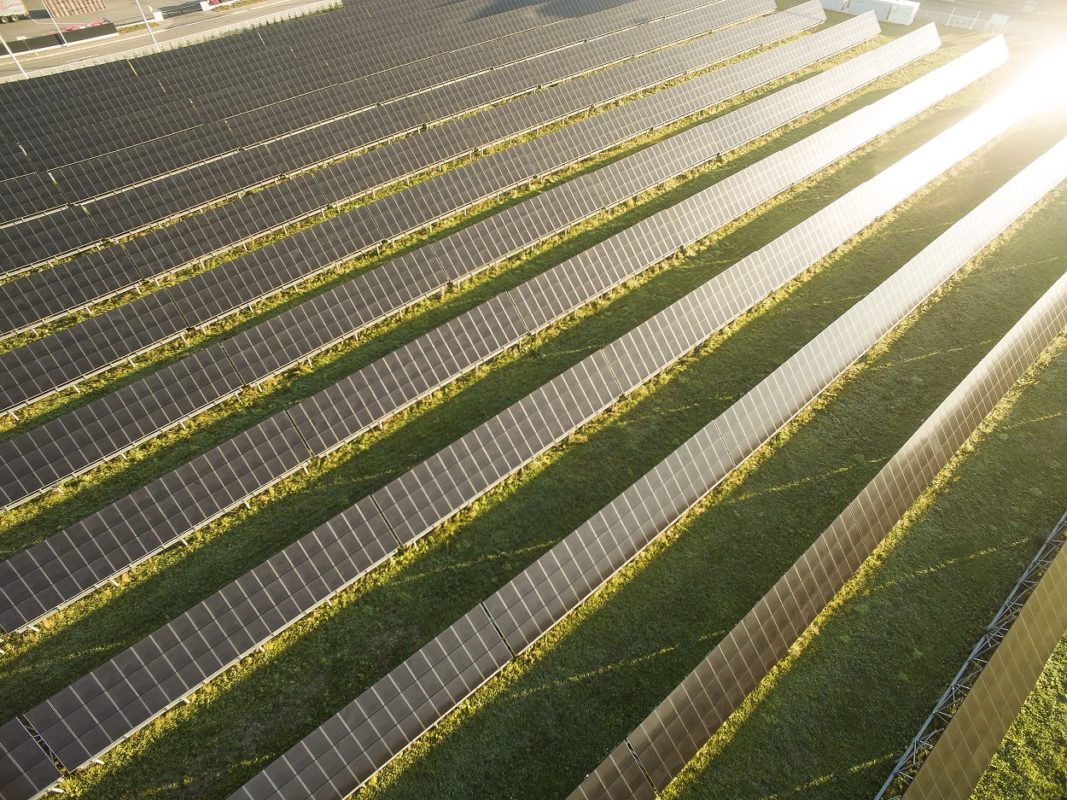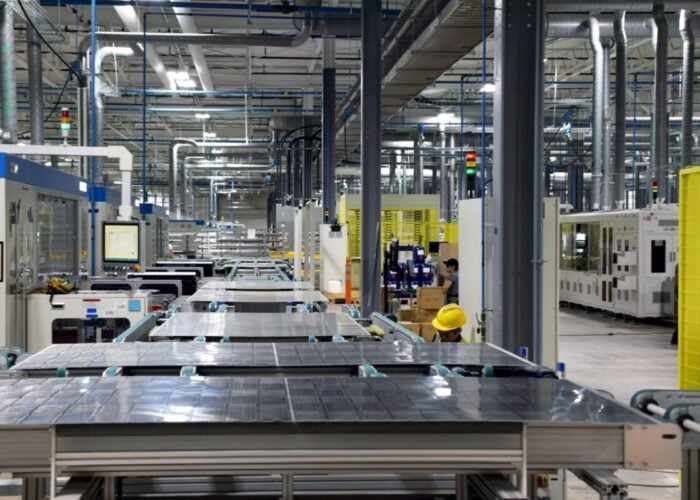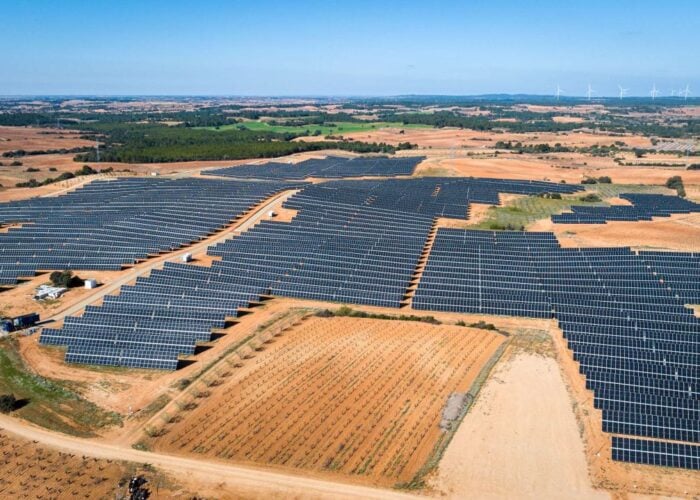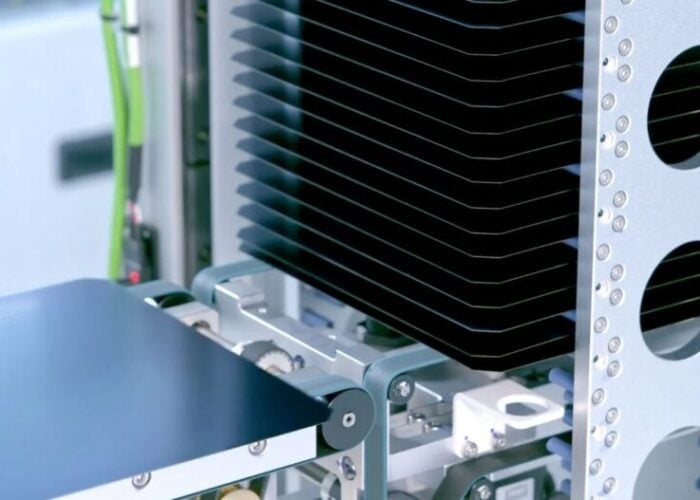Large-scale PV projects are going ahead at pace in Japan and many are showing the quality of design, workmanship and ingenuity the country is famous for. Residential PV is becoming popular too and the business case for self-consumption from commercial rooftops has also grown.
Tokyo-based industry analysis firm RTS PV expects around 10GW of PV to have been installed in 2015. The long-awaited liberalisation of the electricity market finally begins in April of this year, intended to create competition in a space dominated by a group of regional monopoly utilities. Investment and research in energy storage, smart homes, energy management systems and other clean technologies like hydrogen is also well underway.
Try Premium for just $1
- Full premium access for the first month at only $1
- Converts to an annual rate after 30 days unless cancelled
- Cancel anytime during the trial period
Premium Benefits
- Expert industry analysis and interviews
- Digital access to PV Tech Power journal
- Exclusive event discounts
Or get the full Premium subscription right away
Or continue reading this article for free
However, so far this year we have already seen new ‘clean’ coal power plants proposed and nuclear facilities coming back online, while the difficulty of obtaining grid connections is a problem that simply won’t go away. Further ahead, more revision to the feed-in tariff is expected in the 2017 Japanese fiscal year, beginning April 2017. As things stand the government appears prepared to support 64GW of large-scale PV through to 2030 but not go much further and seems likely to tender out the remaining amount available through budget-capped auctions. And the promised land of a freely competitive electricity market is a work in progress in its earliest stages.
Mega-solar era seeing leaves of autumn
Utility-scale ‘mega solar’ power plants have been the main benefactor of the feed-in tariff (FiT), with around 10 times more ground-mount PV capacity deployed than residential to date. Introduced at ¥42 (US$0.36) per kWh in the first year of the scheme running, it’s not hard to see why. While it accounts for much of the phenomenal success of Japan’s industry (in some areas, daytime electricity demand is often covered by solar or close to it), this has led to a number of unintended consequences.
In early 2015 RTS PV’s Dr Hiroshi Matsukawa told PV Tech Power that solar had become embroiled in a so-called ‘shakai-mondai’ (‘social problem’), fuelled mainly by the levying of the surcharge, the strain on the grid and – more questionably – by politicians and lobbying on behalf of heavy industry groups.
Once again, Matsukawa says PV is being drawn into ‘shakai mondai’ in the nation’s media. Cost is still an issue. The surcharge levied by the government’s Ministry of Economy, Trade and Industry (METI) on consumers to pay for renewable schemes doubled last July to ¥1.58 per kWh, piling on political and media pressure. According to Matsukawa, an added element is that the success of mega solar appears to have come at the expense of other renewables, of which Japan still has relatively little. Official statistics show that of a total 25.16GW of renewable energy capacity registered for the FiT during the 2014 financial year, 21.93GW was solar over 10kW and above. Just 1.251GW of wind was registered, 0.463GW of bioenergy, 0.358GW of small hydro and 0.057GW of geothermal.
Build the dream
While there has been tremendous success in deploying over 20GW of mega solar in such a short time, cumulatively over 50GW of such projects FiT-accredited since 2012 have not been built. Many people without previous extensive experience with PV or even suitable land to build their projects registered and, by meeting the simple criterion of choosing government-approved equipment, got their FiT accreditation.
There was a cull of 270MW last year, but fears that speculators may be trading high FiT projects or waiting for equipment costs to fall remained. Developers now must obtain proof of a grid connection agreement with one of the regional power companies before the next incarnation of Japan’s renewable energy laws are heard in 2017, or risk losing FiT registration altogether. RTS PV’s Matsukawa says a rush to get projects in the ground could make it hard to call a prediction for the size of the market in 2016.
Even before agreeing a grid connection, finding open land in Japan is proving difficult. In many cases projects are being developed on steep hillsides, abandoned golf courses, former landfill sites and even bodies of water [see feature on p.53]. Securing land can be a complex issue in Japan for reasons other than just space too.
“You have to clear the land title issue with the landowners and [often] the land’s been held for several generations. If you have to do a few kilometres of grid extension, you might have to clear the right of way,” says Shawn Qu, CEO of Canadian Solar.
“The US and Canada are large countries and don’t have that much history, as Japan does! In general it’s easier to clear land titles in Canada and the USA. But still, Japanese projects are very good projects, they have very stable returns, and the interest rate in Japan is low.”
Canadian Solar has 330MWp of grid connection agreements in place for FiT-accredited mega solar in Japan, and is working with a mixture of Japanese and overseas partners. As Japan awaits the 2017 laws, expected to bring about “fundamental” changes to the FiT, the last annual round of degressive cuts dropped it to ¥27 per kWh from July 2015, a sharper drop than in previous years by about 4-5% and dissuading some investment.
Qu says that while the JFY2015 FiT remained at an adequate level to spawn new projects, for Canadian Solar the curtailment rules attached to the last revision [see box] meant it was trickier to make the economics tick. The clauses on curtailment, Qu says, made projects and project financing difficult.
Changing market dynamics
There was shock at the suddenness of recent government measures to put the brakes on large-scale solar – the larger-than-expected FiT cuts and rules changes including curtailment measures. The retroactive nature of one of these new rules, which means a loss of the original FiT rate if changing equipment from that originally registered, will have caused some pain in the industry. However, it is accepted by the likes of RTS PV, the Japan Renewable Energy Foundation (JREF) and METI that suppression of the “bubble” once and for all was surely needed.
Hideki Gakumazawa, spokesman for Japanese vertically integrated CIS thin-film specialist Solar Frontier, says the company sees opportunity in the un-built mega-solar pipeline. The company could acquire some of the more promising un-built plants, applying economies of scale and obtaining relatively cheap financing. Others are investigating acquiring already-built plants that are not performing as had been intended due to poor or inexperienced design or construction.
As for the expected changes to Japan’s renewable energy laws in the 2017 financial year, the biggest and most talked-about aspect appears to be a switch to a tender process for awarding the large-scale FiT.
Sources in Japan have previously said that the country’s government has closely watched developments in other countries which have introduced “reverse auctions” for PV over the past couple of years, including Britain’s controversial contracts for difference (CfD) scheme.
Nothing can be taken for granted in the policy landscape for renewable energy, and it is far too early to say what form the process will take; for instance, whether it will be capped by budget or deployment. The former seems likely given the economic imperative behind the auctions’ introduction.
The Japan Photovoltaic Energy Association (JPEA), which defines itself as a loosely amalgamated group of industry players has previously said Japan could achieve 100GW of solar by 2030. However, in July last year the organisation, which has Panasonic Corporation chairman Shusuku Nagao as its chair, said that Japan will be on course for 64GW by 2030, in line with the government’s long-term outlook for energy supply and demand. JPEA set that as its target, meaning there is a possibility the auctions could parcel out the remaining capacity from that figure over the period from the auctions’ introductions until 2030.

Segments shift to rooftops
It has always been the Japanese solar industry’s expectation that it would have to survive without subsidies before long. While the brakes might not have gone onto large-scale deployment as smoothly as they could have, it seems the PV market dynamic as a whole has indeed started shifting over to the residential and commercial segments.
Kyocera reported in recent financial results that despite a decline in Japan solar sales in the first six months of 2015, the third quarter had seen an uptick in sales to the commercial sector. Company spokeswoman Hina Morioka tells PV Tech Power that it sees the present market dynamic including a “shift to a market characterised by self-consumption”.
Solar Frontier’s Hideki Gakumazawa says the company’s in-house analysts expect to see a market size of about 7GW to 8GW of PV in Japan in 2016. Within that the market’s split is likely to be more even than in previous years, with around 1GW to 1.5GW of residential demand and the remaining 6GW to 6.5GW deployed split roughly evenly between mega solar and commercial.
The growing case for self-consumption PV solutions for businesses with rooftop installations of up to around 500kW helped Japan’s overall market to have a softer landing at the end of the calendar year. JREF claimed socket parity for residential was reached at the end of 2014, while output obviously goes closer to matching demand in many cases for businesses. There are two tiers of electricity pricing too, with daytime electricity costing more than night. Hideki Gakumazawa says this means a market could open up for generator business models around rooftop leasing.
Electricity market deregulation
From the beginning of the 2016 financial year, an eclectic mix of 750 companies including mobile telecoms firms and petrol stations will start selling residential electricity, having registered to join Japan’s deregulated electricity market. Package deals appear to be a popular marketing strategy, including electricity bundled with phone contracts, with natural gas or other utility supply deals. RTS PV’s Matsukawa says it is positive that choice will be introduced and there is definitely excitement around the changes. JREF and Greenpeace Japan have hailed the fact that consumers will be able to choose greener options.
Matsukawa says it is too early to tell what effect the newly competitive market will exert on prices. Market liberalisation is only in its second year, with industrial power users given the option earlier, and the process will only be complete when the power companies’ stewardship of both infrastructure and power delivery is unbundled, scheduled for 2020.
According to Matsukawa, the new system may turn out not to have a huge direct impact on solar, but Solar Frontier is optimistic it will “support the competitiveness and growth of solar and other clean, renewable energies”, Gakumazawa says.
“The upcoming legal unbundling of power companies could help the growth of renewable energy. In deregulating the market, the government is essentially aiming to create a more efficient nationwide grid, increase price competition and enable the grid to handle changes to the energy mix. The significance for renewable energy is theoretically twofold. First, it means that the national grid could accommodate a much larger capacity of renewable energy. In turn, this could also reduce the risk of curtailment.”
Dwindling ambitions?
The Japanese government set its sights very high in introducing the FiT in 2012 and now in a subsequent administration under the rule of prime minister Shinzo Abe appears contented to pull back from that initial trajectory, committing to a 22-24% renewable energy contribution to the national energy mix by 2030, with solar at about 7% within that framework.
Some have argued that this proportion of renewable energy will not be enough to allow Japan to meet its carbon targets, despite the fact that the country’s INDC ahead of the COP21 talks were described as the “least ambitious” of any developed nation except for Russia by the World Resources Institute NGO. The reductions in greenhouse gases called for by 2030 are at 26% of 2013 levels. By comparison the EU’s target is a 40% reduction from 1990 levels.
It remains to be seen if competition enabled by electricity market deregulation and a slowly rising but definite trend towards self-consumption PV can move the needle further. Ultimately, says Canadian Solar’s Shawn Qu, Japan has “shown its technical ability and the policy success” in implementing large- and small-scale solar.
“Japan should also be proud of it because it’s a leader in many clean energy technologies,” Qu says. “For example, in combining PV with home energy management systems, Japan is leading. The world should be able to learn from what Japan has achieved.”
Next week PV Expo, Japan's biggest solar trade show, takes place in Tokyo. PV Tech reporter Andy Colthorpe will be reporting live from the event. If you have any show-related news, you can contact him at [email protected]. Japan is one of the main focuses of the new edition of PV Tech Power. To read the issue in full, click here.
Curtailment rules hampered 2015 activity
To help resolve the mega-solar development bottleneck, rules were introduced last year allowing for more curtailment of PV power station output by utilities, with central inverters to be fitted with utility-controlled remote shutdown devices. The rules include the right to curtail PV station output to grid for up to 360 hours per year before having to compensate project owners. Previously, since 2012, if the output was curtailed for more than 30 days in a year – with any unbroken one hour period enough to count as a day – utilities had to compensate project owners. Worse than that, once a utility has reached the maximum capacity it says it can handle in an area, it can begin curtailing PV output without compensation.
Japan’s solar irradiance varies greatly from its northern to southern islands. The island of Kyushu in the south, with a near-Mediterranean climate, saw PV plants sprout up quickly under the FiT and its local power company became the first of the utilities to call a halt to new grid connection applications in October 2014. Kyushu Electric Power (Kyuden) near the end of last December revealed it is at over 5GW of a permissible 8GW limit.
Then, near the end of January Shikoku Electric Power (Yonden), serving the fourth largest of Japan’s main islands, announced that it had already arrived at the 2.7GW limit for connections, meaning any new facilities would be subject to curtailment rules.
While limiting PV generation to just 8GW before uncompensated curtailment occurs, Kyushu Electric Power has also applied to build 1.7GW of so-called ‘cleaner’ coal generation facilities already in 2016 and switched back on its Sendai nuclear plant last summer.




